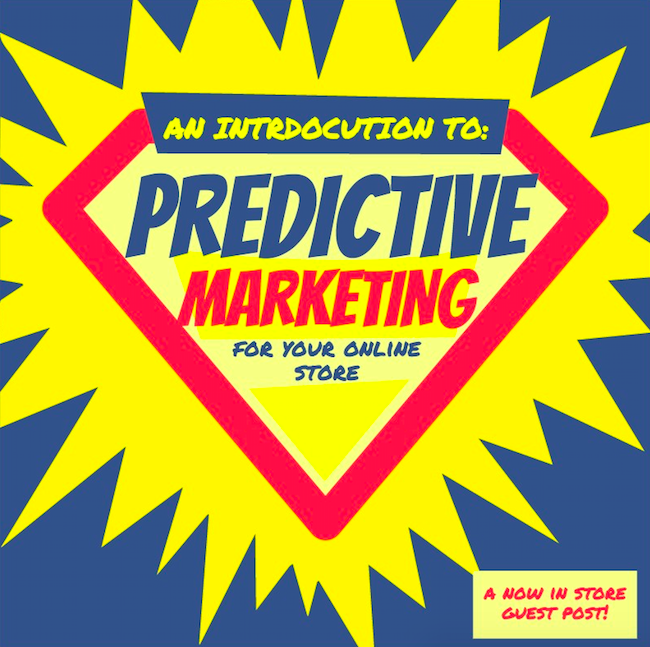Amazon is arguably one of the most powerful sales machines in ecommerce today. Their predictive recommendation engine is one of the reasons it is. We’ve got Beeketing on the blog to give us a briefer on how predictive recommendation works and why it’s useful.
Enter Beeketing:
Do you want to make your customers say “Shut up and take my money!” right when they land on your store?
You can always make that happen as long as you understand your customers and give them what they truly need and want. But how?
Each of your customers has a different set of interests and habits. Knowing and understanding each of your customers is a hard task.
What happens when brands spend some time treating their target audiences like people instead of treating them as numbers in an excel sheet? It could be hard and time-consuming but it’s definitely worth. That’s why predictive & personalized recommendation can be considered as a salespeople’s best friend.
So, what is Predictive Recommendation?
Predictive recommendation are tactics that allow online stores to sell and suggest relevant products, like Amazon — that is, to nurture visitors with highly personalized, useful content that helps convert them into first-time customers and eventually turns them into life-long customers. This type of recommendation typically generates significant new revenue for online stores, as it maximizes the average order value per customer for you.
How does Amazon’s recommendation system work?
Normally online sellers can use up-sell and cross-sell to suggest products that they think their customers might like or need as a bundle. However, a predictive recommendation system (like Amazon’s) doesn’t assume, it uses precise data to run perfectly.
First, it collects detailed information on each of your customers and of your product’s performance, which you can hardly do with just 24 hours a day. It covers your customer’s purchasing history, type of products, colors, styles they like, how much they usually spend, when they finished their last order… and at the same time, it can also tell you how your products perform on the site, which product is more popular than others…based on customer behaviors & interest.
Second, with smart algorithms, it divides your customers into small groups based on their interests, behaviors, budgets… and then builds models for each of them. These models are then used to predict customer’s behavior in the future.
Last but not least, with the customer’s models, it will determine relevant recommendations that have a higher probability of generating a sale and suggests those recommendations to the corresponding customers.
For example, after collecting Ms. Jane’s information, Amazon knows that she usually searches for bright color flat shoes on the site with price range of $39 to $59 and she usually buys new things on the weekend or during the holidays. With that information, the recommendation system will know that she would like a pair of trendy white flat shoes with the price of $45, and then suggest it to her or even offer her a small discount if she takes it home this Saturday.
Predictive Recommendation can change the way you sell
1. Deliver relevant products/content
By understanding your customer’s behavior deeply and carefully analyzing his previous browsing history, a predictive recommendation system can suggest to him relevant products as he shops. The data is collected and analyzed continuously in real time so the predictive recommendation can react as customer’s shopping habits change.
2. Turn visitors into customers
Delivering relevant products makes the site more personal for the visitor and makes him feel like the site is made for him. Even if the customer doesn’t have an interest in purchasing something at the moment he will be pulled to visit your site again to make a purchase when he’s ready.
3. Engage customer
Predictive recommendation is not only a salesperson’s best friend, it’s also a customer guide. Customers are able to look more deeply into the product line without having to perform search after search. It saves the customer a ton of time and effort.
4. Increase your sales
When a customer sees an option that interests him, he is more likely to add extra products to his cart. Each time he does that, both your average order value and the number of items per order rise which, of course, increases your total revenue. Moreover, it makes the customer purchase more without feeling forced.
Conclusion
As you already know, the volume required to make predictive recommendation for each customer is far too large to manage manually. Using predictive recommendation can help you save time and effort from collecting and analyzing customer’s information, making your work less painful and effective.
Moreover, a predictive recommendation system can provide you with up-to-date reports. As an automated marketing tool, it can support you and keep you on track, helping to measure your work and your site performance, so you can make changes easily if necessary.
-By Katherine @Beeketing
Most small & medium online sellers don’t have the resources to build such a complicated predictive system like Amazon. Check out Beeketing to make it happen more easily for you. Beeketing is an automation platform to turn more visitors into revenue for online stores by predictive recommendation & personalized automation emails

